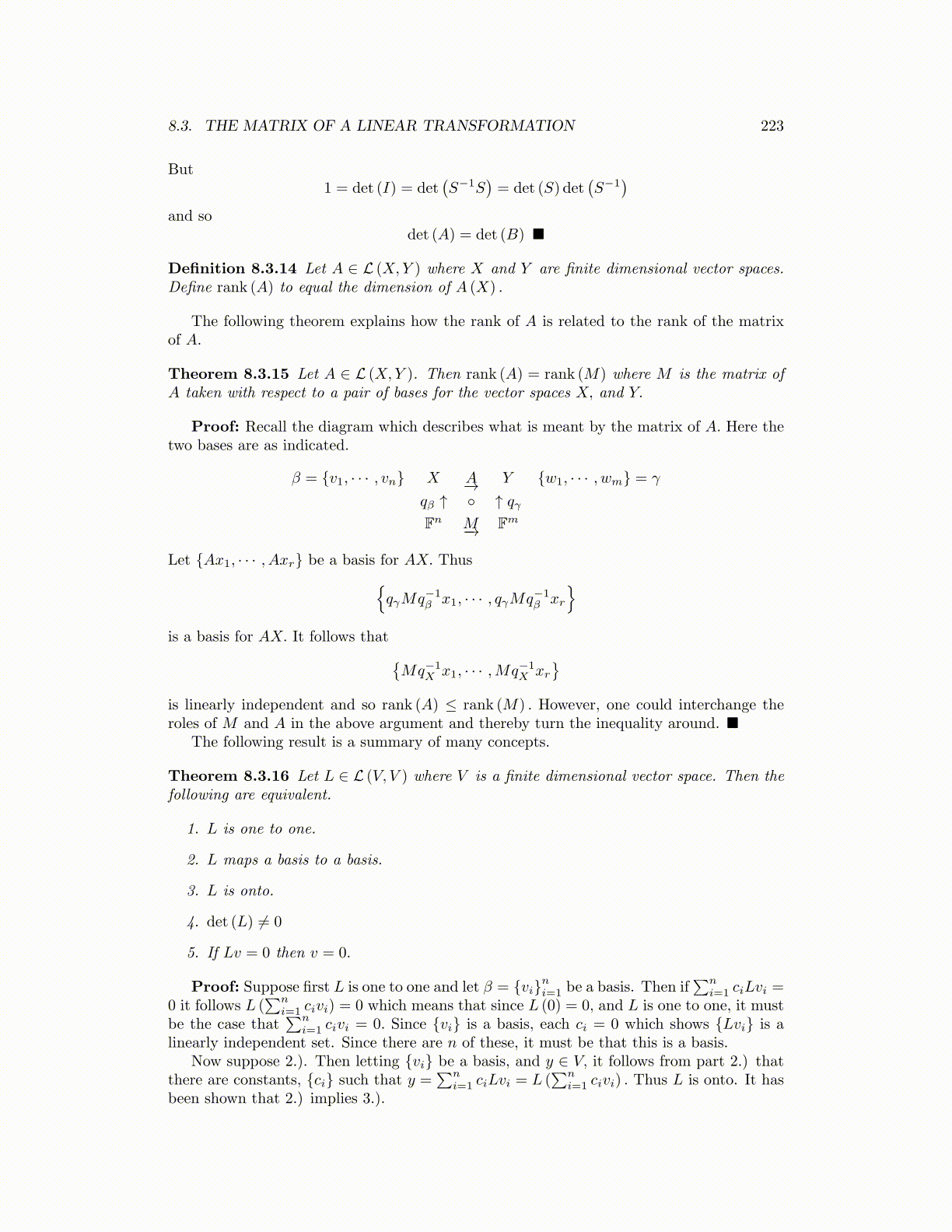
8.3. THE MATRIX OF A LINEAR TRANSFORMATION 223
But1 = det (I) = det
(S−1S
)= det (S) det
(S−1
)and so
det (A) = det (B) ■
Definition 8.3.14 Let A ∈ L (X,Y ) where X and Y are finite dimensional vector spaces.Define rank (A) to equal the dimension of A (X) .
The following theorem explains how the rank of A is related to the rank of the matrixof A.
Theorem 8.3.15 Let A ∈ L (X,Y ). Then rank (A) = rank (M) where M is the matrix ofA taken with respect to a pair of bases for the vector spaces X, and Y.
Proof: Recall the diagram which describes what is meant by the matrix of A. Here thetwo bases are as indicated.
β = {v1, · · · , vn} X A−→ Y {w1, · · · , wm} = γ
qβ ↑ ◦ ↑ qγFn M−→ Fm
Let {Ax1, · · · , Axr} be a basis for AX. Thus{qγMq−1
β x1, · · · , qγMq−1β xr
}is a basis for AX. It follows that {
Mq−1X x1, · · · ,Mq−1
X xr}
is linearly independent and so rank (A) ≤ rank (M) . However, one could interchange theroles of M and A in the above argument and thereby turn the inequality around. ■
The following result is a summary of many concepts.
Theorem 8.3.16 Let L ∈ L (V, V ) where V is a finite dimensional vector space. Then thefollowing are equivalent.
1. L is one to one.
2. L maps a basis to a basis.
3. L is onto.
4. det (L) ̸= 0
5. If Lv = 0 then v = 0.
Proof: Suppose first L is one to one and let β = {vi}ni=1 be a basis. Then if∑n
i=1 ciLvi =0 it follows L (
∑ni=1 civi) = 0 which means that since L (0) = 0, and L is one to one, it must
be the case that∑n
i=1 civi = 0. Since {vi} is a basis, each ci = 0 which shows {Lvi} is alinearly independent set. Since there are n of these, it must be that this is a basis.
Now suppose 2.). Then letting {vi} be a basis, and y ∈ V, it follows from part 2.) thatthere are constants, {ci} such that y =
∑ni=1 ciLvi = L (
∑ni=1 civi) . Thus L is onto. It has
been shown that 2.) implies 3.).